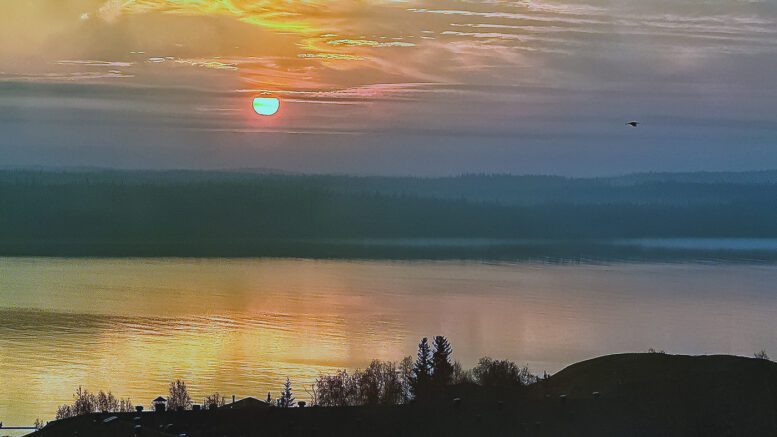Water levels across most of the NWT remain very low and the winter’s snowpack is well below average.
That’s what the latest NWT Water Monitoring Bulletin stated today.

Marine Transportation Services barges depend on normal water levels. Last summer’s re-supply schedule was cut short when Mackenzie River levels dropped sharply. (Photo courtesy GNWT.)
These dry conditions began during the summer and fall of 2022 and have persisted through the end of last year, largely due to hot and dry conditions in northern Alberta and British Columbia, and the southern NWT over the past two summers.
Some key findings:
- The Slave River was below average over the fall and remained that way through winter.
- Great Slave Lake remains at the lowest water level ever recorded for this time of year.
- But water levels on Great Slave Lake have been slowly increasing as is normal for this time of year.
- Great Bear Lake is at its lowest water level ever recorded for this time of year.
- Flow along the Mackenzie River is at its lowest ever recorded value for this time of year.
Snowfall amounts received across the territory over the entire winter were well below average in Hay River, Fort Simpson, Fort Smith and Norman Wells, below average in Yellowknife, and well above average in Inuvik.
Last fall, after the summer of wildfires and evacuations, a hydrologist with the Government of the Northwest Territories, said he was hoping for some more rain coming in through 2024.
Ryan Connon told CBC: “There’s a huge moisture deficit that needs to be filled before water levels can return to normal. So, what that means is, essentially, if we have average snowpack and average rainfall next year, that won’t be enough water to bring water levels back to average.”
His attention is also on how wildly water levels are swinging from year to year, noting Great Slave Lake had levels in 2020 and 2021 reaching near record highs.
Shipping and hydro-electric generation all require normal water levels. With some scenic waterfall attractions drying up last summer, the tourism industry could also be negatively affected unless rainfall is plentiful this spring.

The Northwest Territories used to be able to boast about having 163,000 square kilometres of fresh water. That watery wonderland was a solid tourist draw. This image was taken east of Yellowknife in 2023. (James O’Connor/CKLB.)





